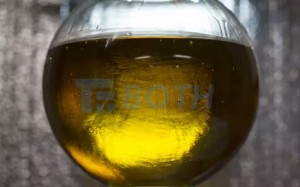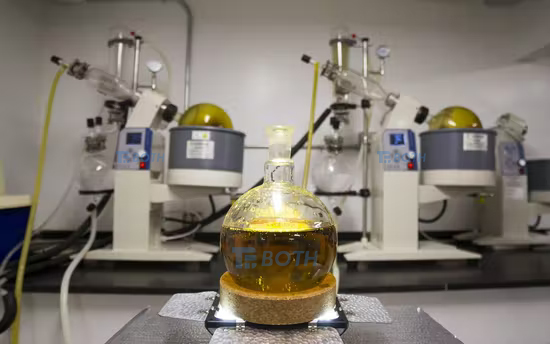As the herbal industry has mushroomed over the past few years, the share of the market attributed to herbal extracts has burgeoned even faster. So far, two types of herbal extracts, butane extracts and supercritical CO2 extracts, have accounted for the production of a vast majority of concentrates available on the market.
Yet a third solvent, ethanol, has been gaining on butane and supercritical CO2 as a solvent of choice for producers manufacturing high-quality herbal extracts. Here’s why some believe that ethanol is the overall best solvent for herbal extraction.
No solvent is perfect for herbal extraction in every way. Butane, the most common hydrocarbon solvent currently used in extraction, is favored for its non-polarity, which allows the extractor to capture the desired herbal and terpenes from herbal without co-extracting undesirables including chlorophyll and plant metabolites. Butane’s low boiling point also makes it easy to purge from the concentrate at the end of the extraction process, leaving a relatively pure byproduct behind.
That said, butane is highly combustible, and incompetent home butane extractors have been responsible for the manifold stories of explosions resulting in serious injuries and giving herbal extraction as a whole a bad rap. Furthermore, low-quality butane utilized by unscrupulous extractors can retain an array of toxins that are harmful to humans.
Supercritical CO2, for its part, has been praised for its relative safety in terms of toxicity as well as environmental impact. That said, the lengthy purification process required to remove co-extracted constituents, such as waxes and plant fats, from the extracted product can take away from the final herbal and terpenoid profile of extracts yielded during supercritical CO2 extraction.
Ethanol turned out to be just that: effective, efficient, and safe to handle. The FDA classifies ethanol as “Generally Regarded as Safe,” or GRAS, meaning that it is safe for human consumption. As a result, it is commonly used as a food preservative and additive, found in everything from the cream filling in your donut to the glass of wine you enjoy after work.

Even though ethanol is safer than butane and more effective than supercritical CO2, a standard ethanol extraction isn’t without its issues. The biggest hurdle by far was ethanol’s polarity, a polar solvent [such as ethanol] will readily mix with water and dissolve water soluble molecules. Chlorophyll is one of those compounds which will easily co-extract when using ethanol as a solvent.
Cryogenic ethanol extraction way is able to reduce the chlorophyll and the lipids after extraction. But for the long extraction time, low production efficiency, and high power consumption, which make the ethanol extraction can’t show its advantages.
While traditional filtration way do not work well especially in the commercial production, the chlorophyll and the lipids will cause coking in the Short Path Distillation Machine and waste your valuable production time instead of cleaning.
Through research and experimentation over the span of several months, Gioglass Technology Department was able to conceive a method that purify both the chlorophyll and the lipids in botanical materials after extraction. This proprietary function allows for the creation of Room Temperature ethanol extraction. That will sharply decrease the production cost in herbal production.
At present, this exclusive process is applied in USA. & Zimbabwe herbal production line.
Post time: Nov-20-2022








